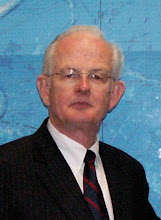Perhaps no issue is more divisive within the conflicted community of churches claiming Christian authenticity than that of priesthood authority. Even a casual investigator of Christianity might suppose that ordinances held up as being necessary for salvation in a Kingdom of Heaven might require adherence to God-established procedures and authority. Yet, the reality is that established, supposedly Christian churches contend with one another for membership aloof of any apparent necessity to as much as seek to demonstrate their possession of proper priesthood authority.
If there is a church that actually has historical roots that stretch back to the Apostle Peter, then no church separating itself from another with such a claim of authority may reasonably or logically claim to possess valid priesthood authority. In all likelihood, that is the reason that churches under the Protestant umbrella spend almost no time proclaiming sole priesthood authority. If there is in fact no church which possesses an unbroken line of priesthood authority from the days of the Savior’s earthly ministry to the present, then claims by any Christian church for authenticity are moot. Little wonder that Joseph Smith and many others living in relatively modern times have been or are so bewildered by the unsubstantiated claims of competing churches of their Christian authenticity. If no existing church can reasonably demonstrate an unbroken line of priesthood authority reaching back to the authorities of the church that the Savior established in the meridian of time, then His Church is no longer on the earth despite impassioned claims to the contrary.
In light of this issue, the Lord’s answer in 1820 to Joseph Smith’s humble and searching inquiry as to which church he should join is very instructive. “I was answered that I must join none of them, for they were all wrong; and the Personage who addressed me [the Lord Jesus Christ] said that all their creeds were an abomination in his sight; that those professors were all corrupt; that: ‘they draw near to me with their lips, but their hearts are far from me, they teach for doctrines the commandments of men, having a form of godliness, but they deny the power thereof’ “ (Joseph Smith - History 1:19). The question concerning whether one of the professing Christian churches in 1820 was the Lord’s Church was answered emphatically by the Savior Himself. The issue is settled.
Joseph Smith learned during this visitation that in time he would be an instrument in the Lord’s hands whereby the true Church of Jesus Christ would be restored to the earth along with the Holy Priesthood. In earlier posts to this blog, the incremental steps by which this work of restoration proceeded have been detailed. Therefore, now it suffices to say simply that the Melchizedek Priesthood was restored to the earth in 1829 by Peter, James, and John, the Presidency of the High Priesthood in the meridian of time, through the laying on of hands to the Prophet Joseph Smith and Oliver Cowdery. They then were able to trace their Priesthood line of authority back to the Savior Himself. The same may be said for every Melchizedek Priesthood holder in The Church of Jesus Christ of Latter-day Saints in this dispensation. Everyone of us may trace our line of authority step by step, brother by brother, back to the Savior Himself.
The fifth Article of Faith of The Church of Jesus Christ of Latter-day Saints reads: “We believe that a man must be called of God, by prophecy, and by the laying on of hands by those who are in authority, to preach the Gospel and administer in the ordinances thereof.”

No comments:
Post a Comment